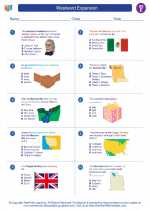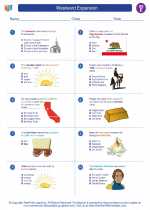House of Representatives
The House of Representatives is one of the two chambers of the United States Congress, the other being the Senate. It is sometimes referred to as the lower house because of its larger size compared to the Senate. The House of Representatives is responsible for making and passing federal laws, representing the interests of the people, and conducting oversight of the executive branch.
Composition
The House of Representatives consists of 435 members, each representing a congressional district. The number of representatives from each state is based on the state's population, with each state being guaranteed at least one representative. Representatives are elected to two-year terms and must be at least 25 years old, a U.S. citizen for at least seven years, and a resident of the state they represent.
Leadership
The leader of the House of Representatives is the Speaker of the House, who is elected by the members of the House. The Speaker is responsible for presiding over the House, maintaining order, and representing the House to the president and the Senate. The majority party also elects a Majority Leader and a Majority Whip, while the minority party elects a Minority Leader and a Minority Whip.
Powers and Responsibilities
The House of Representatives has the exclusive power to initiate revenue-related bills, such as taxation and government spending. It also has the power to impeach federal officials, including the president. In addition to its legislative powers, the House conducts oversight of the executive branch through hearings, investigations, and the power to subpoena witnesses and documents.
Study Guide
- What is the House of Representatives?
- How many members are there in the House of Representatives?
- What are the qualifications to be a member of the House of Representatives?
- Who is the leader of the House of Representatives?
- What are the exclusive powers of the House of Representatives?
- What is the role of the House of Representatives in conducting oversight of the executive branch?
Use this study guide to review and test your understanding of the House of Representatives. Understanding the composition, leadership, powers, and responsibilities of the House of Representatives is essential for a comprehensive understanding of the U.S. government and its legislative processes.
.◂Social Studies Worksheets and Study Guides Fifth Grade. Westward Expansion

 Worksheet/Answer key
Worksheet/Answer key
 Worksheet/Answer key
Worksheet/Answer key
 Worksheet/Answer key
Worksheet/Answer key
